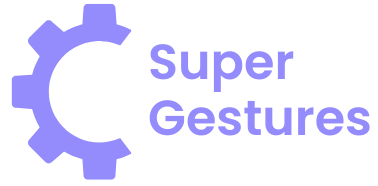Table of Contents
ToggleIn a world where coding skills can unlock doors to endless opportunities, diving into coding project tutorials is like finding the secret map to Treasure Island. Whether you’re a seasoned coder or just starting out, these tutorials offer a fun and engaging way to sharpen your skills while building real projects. Who knew learning could feel like playing a video game?
Overview of Coding Project Tutorials
Coding project tutorials serve as essential resources for developing practical skills in programming. These tutorials guide learners through real-world projects, promoting engagement and retention of complex concepts. Experienced coders often find advanced tutorials beneficial for refining their skills, while beginners utilize them to establish a solid foundation.
Tutorials frequently cover a variety of programming languages such as Python, JavaScript, and Java. Carefully structured lessons encourage users to build applications, websites, or games. Each completed project enhances a coder’s portfolio, showcasing their abilities to potential employers.
Resources vary in format, including video tutorials, written guides, and interactive coding platforms. Many tutorials include step-by-step instructions, code snippets, and troubleshooting tips, making them accessible to learners with different backgrounds. Accessibility plays a crucial role in their effectiveness; thus, many platforms ensure content reaches a wide audience.
Community support positively influences the learning experience. Learners can share progress and seek advice within forums or coding groups, often leading to collaborative projects. This social interaction fosters a sense of belonging and enhances motivation.
Ultimately, coding project tutorials offer a structured and engaging approach to programming education. By actively working on projects, learners reinforce their understanding and gain confidence in their coding abilities. Whether for personal growth or professional development, these tutorials provide valuable pathways to mastering coding skills.
Types of Coding Project Tutorials
Coding project tutorials come in various formats, each tailored to meet the needs of different skill levels. These resources aid learners as they progress through their coding journey.
Beginner Tutorials
Beginner tutorials focus on fundamental concepts and skills. They introduce basic programming languages like Python and JavaScript through simple projects. These projects often involve creating basic applications or websites. Engaging step-by-step instructions help new coders understand key programming principles. Users can gain confidence while seeing immediate results, enhancing their learning experience.
Intermediate Tutorials
Intermediate tutorials target those who have mastered the basics. These tutorials challenge learners with more complex projects that incorporate multiple programming languages. Typically, they involve building interactive features for websites or developing small games. Furthermore, learners deepen their problem-solving skills while integrating APIs and libraries into their projects. Successful completion of these tutorials broadens a programmer’s portfolio and showcases increased competence.
Advanced Tutorials
Advanced tutorials cater to experienced coders looking to refine their skills. These tutorials tackle sophisticated projects that often involve machine learning, data analysis, or full-stack development. Participants engage in real-world applications, facing challenges that require critical thinking and advanced strategies. Consequently, these projects push boundaries, encourage innovation, and prepare learners for professional programming roles. Understanding advanced concepts strengthens a coder’s expertise and boosts their credentials in the tech industry.
Key Benefits of Coding Project Tutorials
Coding project tutorials significantly enhance programming skills while offering practical experiences. They provide structured pathways for mastering concepts through hands-on projects, appealing to both beginners and seasoned coders.
Enhancing Coding Skills
Having clear guided projects allows learners to grasp programming concepts in real-world contexts. Tutorials often focus on specific languages like Python and JavaScript, making engagement easier. Each project incorporates problem-solving elements, strengthening analytical skills. By tackling diverse challenges, learners can adapt to various coding scenarios. Immediate feedback during coding exercises fosters a deeper understanding of mistakes and corrections. Consequently, this approach builds confidence in one’s coding abilities. As learners progress, tutorials increase in complexity, ensuring continuous skill development.
Building a Portfolio
Developing a portfolio showcases practical coding abilities to potential employers. Completed projects demonstrate proficiency in languages and frameworks, providing tangible evidence of skills. Tutorials often culminate in finished applications, websites, or games, which can serve as pivotal portfolio pieces. By documenting each project, coders illustrate their journey and improvements over time. Employers appreciate seeing real-world applications of coding knowledge, enhancing hiring potential. Furthermore, different types of projects allow for a well-rounded representation of expertise. A robust portfolio not only highlights individual projects but also tells a story of growth and dedication.
Popular Platforms for Coding Project Tutorials
Coding project tutorials are widely available across various platforms, catering to different learning preferences and needs.
Online Learning Platforms
Online learning platforms host numerous coding project tutorials that cover a wide range of languages and skill levels. Websites like Coursera, edX, and Udacity offer structured courses with hands-on projects to provide practical experience. These platforms typically feature collaborative assignments, allowing users to interact and receive feedback from peers and instructors. Engaging with these tutorials leads to a deeper understanding of coding concepts, reinforcing skills through real-world applications.
YouTube Channels
YouTube channels dedicated to coding provide free, accessible tutorials for learners of all levels. Channels such as Traversy Media and The Net Ninja offer project-based lessons that simplify complex topics. Short video formats encourage quick learning and allow users to follow along easily. Additionally, channels often include community interaction through comments, fostering discussions and clarifying doubts. The video format appeals to visual learners, making these channels a popular choice for coding tutorials.
Coding Bootcamps
Coding bootcamps deliver immersive, accelerated coding education through hands-on projects. Programs like General Assembly and Flatiron School provide structured curricula designed to prepare learners for tech careers. Intensive training sessions focus on both foundational and advanced skills, ensuring comprehensive learning. Networking opportunities within bootcamps enhance connections with industry professionals, further increasing job prospects. Graduates leave with a portfolio showcasing their work, making them competitive in the job market.
Tips for Choosing the Right Tutorial
Choosing the right tutorial enhances the coding experience and maximizes learning potential.
Consider Your Skill Level
Beginner, intermediate, and advanced tutorials cater to specific skill levels. New coders should start with beginner tutorials that cover fundamental concepts and simple projects. Gradually advancing to intermediate tutorials helps build confidence through more complex challenges. Experienced coders benefit from advanced tutorials, which cover sophisticated topics like machine learning. It’s essential to match the tutorial with one’s current skills to avoid frustration or boredom. Select tutorials that offer a structured learning path aligned with capabilities.
Assess the Project Relevance
Relevance is key when selecting a coding project tutorial. Aligning projects with personal interests or career goals boosts motivation and engagement. For instance, those interested in web development may prefer tutorials focused on building websites or applications, while data enthusiasts may opt for data analysis projects. Evaluating the practical application of a project also enhances the learning experience. Projects that reflect real-world scenarios often lead to better understanding and retention. Choosing relevant projects ensures meaningful engagement throughout the learning journey.
Coding project tutorials serve as invaluable tools for anyone looking to enhance their programming skills. By providing structured guidance and real-world applications, these resources help learners build confidence and competence in coding. With a variety of formats available, from videos to interactive platforms, there’s something for everyone regardless of their skill level.
As learners progress through tutorials, they not only gain practical experience but also create a portfolio that showcases their abilities to potential employers. This journey through coding not only opens doors to new opportunities but also fosters a sense of achievement and personal growth. Embracing coding project tutorials can truly transform one’s approach to learning and career development in the tech industry.




